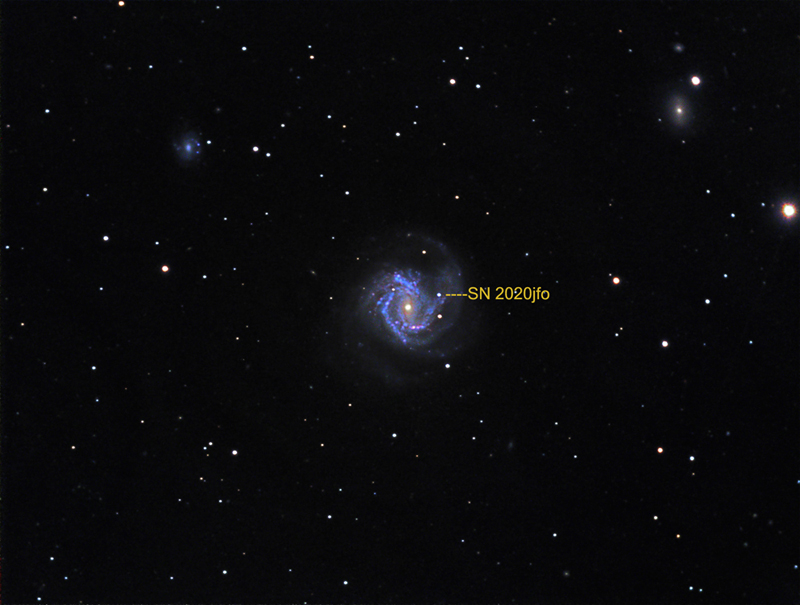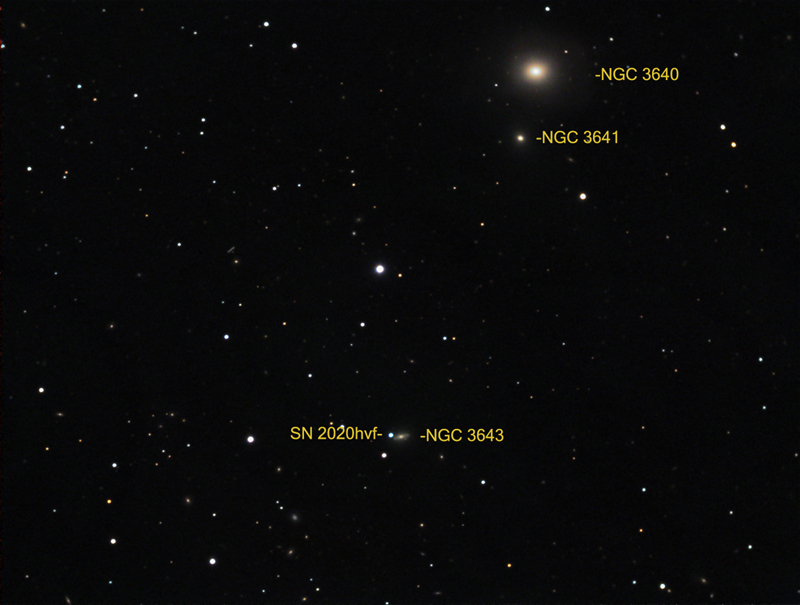Member Reports, continued:
From Al Johnson:
I hope all is well and safe with you and yours.
I just finished doing a polar alignment of my permanent pier mount in my observatory using the drift method. This took place in mid-May during two clear nights. I also installed two new hi-resolution encoders for my Lumicon Sky Vector digital setting circles that I use to point my 10” Newtonian scope. Next clear night I will check out their ops. I recently had the 10” mirror recoated, reinstalled and aligned with my laser collimator. My plan is to start imaging with the 10” Newtonian. I sent my 4” FS102 to Takahashi in Houston for cleaning at the beginning of April but it its coming up to 2 months and it’s not ready yet.
I spent some time trying to locate the two comets but never did find them, somewhere between Polaris and Capella. The northwest tree locations here don’t help.
From Don Filer:
I can not contribute much but can report that I observed Venus and Mercury as they passed close by each other on Thursday, May 21. Venus’ razor thin crescent was a pretty sight in binoculars with Mercury in the same field of view.
From Jim Mazur:
On May 21, I was able to capture images of two supernovae that appeared in distant galaxies this spring. The first was in the face-on spiral galaxy Messier 61, also known as Oriani’s galaxy. This supernova was discovered on May 6 and was designated SN 2020jfo. Comparing it with nearby stars, I estimated its magnitude to be about 14.3, which put it in range of visual observation through large amateur scopes.
The other supernova, SN 2020hvf, was discovered on April 21 in the dim galaxy NGC 3643 in Leo. The picture shows that the supernova is brighter than the entire rest of the galaxy combined! This galaxy is about magnitude 14.6, and I estimated the brightness of the supernova to be about 13.5. When a supernova is brighter than its galaxy, that’s one big explosion!
Two other features caught my attention in the second image. First, there is the larger elliptical galaxy NGC 3640 near the upper edge of the field. Looking closely, you can see an oddly shaped faint halo, roughly rectangular and not centered on the brightest part of the galaxy. I have never seen a galaxy with a feature like this, and don’t know what to make of it. I first thought it was some type of defect or artifact in my image, but I found some pictures of this galaxy online, and they do show this curious asymmetrical halo. Second, to the left of center in this image there is a short diagonal line, which is probably a passing asteroid.
One of the things that’s so much fun about astrophotography is that you never know exactly what you will see when you process your image and examine it closely.


